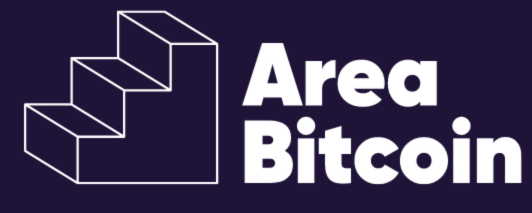The Genesis Block isn’t just the first block ever mined on the Bitcoin blockchain—it’s the foundation of a quiet revolution that has forever changed how we think about money, power, and financial freedom.
In this article, we’ll dive into the details of the Genesis Block, explore its technical and historical significance, and see how it continues to inspire Bitcoiners worldwide.
Shall we get started?
Table of contents:
What is the Genesis Block?
The Genesis Block, also known as Block 0, is the first block ever mined on a blockchain. Since it’s the very first, it doesn’t reference any prior block. Mined by Satoshi Nakamoto on January 3, 2009, this block marks the official birth of Bitcoin.
In Bitcoin’s blockchain, a block is a collection of validated transactions that are grouped together and added to the chain. Each new block links to the one before it, forming an unbroken sequence—hence the name blockchain.
Because the Genesis Block is the first in this sequence, it has no predecessor, making it entirely unique.
Beyond its technical significance, the Genesis Block contains embedded messages and distinctive features. One of the most notable is a reference to a newspaper headline from the time:
“The Times on January 3, 2009, Chancellor on brink of second bailout for banks.”
This headline appeared in The Times, a British newspaper, on the same day the block was mined.

By embedding this phrase into the block, Satoshi sent a clear message: a critique of the existing financial system and a declaration that Bitcoin was designed as a decentralized alternative, resistant to government and institutional control.
We’ll explore the deeper meaning behind this message later on.
The Structure of Bitcoin’s Block 0
Bitcoin’s Genesis Block, also known as Block 0, has several unique characteristics:
- First Block: As the very first block, it doesn’t reference any prior block, meaning it contains no previous transaction data.
- Mining Reward: The block originally contained a mining reward of 50 Bitcoins, but these coins have never been spent. This untouched reward symbolizes the purity of Satoshi’s vision for Bitcoin. The address associated with the block still holds these unspent Bitcoins.
- Mining Simplicity: In 2009, Satoshi mined the Genesis Block using a standard CPU. Today, Bitcoin mining requires specialized hardware known as ASICs. Back then, the process was far simpler, there was no competition, and the mining difficulty was significantly lower.
History and importance of the Genesis Block
On January 3, 2009, Satoshi Nakamoto did more than launch a software application or a network, he laid the foundation for a decentralized financial system aimed at returning control of wealth to individuals, free from government and institutional influence.
Beyond its technical significance, the Genesis Block carries a profound symbolic message, one that continues to resonate with Bitcoiners to this day.
The symbolic message in the Genesis Block
As mentioned earlier, the Genesis Block contains a reference to a headline from the British newspaper The Times: “The Times 03/Jan/2009 Chancellor on brink of second bailout for banks.”
At first glance, this may seem like a simple phrase, but it directly connects us to the historical context in which Bitcoin was born: a global financial crisis where governments issued multi-billion-dollar bank bailouts at the expense of the general public.
This message wasn’t placed there randomly. It serves as a subtle yet powerful manifesto, revealing Satoshi’s intent behind creating Bitcoin: to offer an alternative to a centralized, corrupt financial system that had repeatedly failed to serve the public.
Bitcoin was designed as a response to this — a system resistant to censorship, government control, and monetary manipulation.
The creation of Block 0
Reflecting on the creation of the Genesis Block is like looking back at the birth of Bitcoin itself and the economic conditions that shaped it.
At the time, the world was in the midst of the 2008 financial crisis, also known as the subprime mortgage crisis, a global economic collapse that began in the United States and quickly spread worldwide.
The roots of the crisis trace back to the late 1990s when the U.S. government loosened credit regulations, allowing high-risk borrowers to secure loans they were unlikely to repay. Banks bundled these risky mortgages with lower-risk investments, using real estate as collateral. This practice inflated a housing bubble, artificially driving up property values without a corresponding rise in income levels.
As homeowners began defaulting on their loans, financial institutions suffered massive losses.
The crisis reached its peak on September 15, 2008, when Lehman Brothers, one of the most established investment banks in the U.S., declared bankruptcy. That day became known as “Black Monday.”

Just weeks later, on October 31, 2008, Satoshi Nakamoto published the Bitcoin White Paper. Then, on January 3, 2009, he mined the Genesis Block.
Thus, Bitcoin’s creation and the message embedded in the first block were a direct response to the traditional banking system and a testament to the motivations behind its creation.
The role of the Genesis Block in the Bitcoin Network
The Genesis Block serves as the foundation for all future transactions on the Bitcoin network. Every new block added to the blockchain traces back to it, forming a continuous and secure chain of records.
Beyond its technical function, the message Satoshi embedded wasn’t just a critique of the financial system, it also acted as a timestamp, proving the exact date and time of the block’s creation.
This was crucial in verifying that the block was indeed mined on January 3, 2009, as it referenced a newspaper headline from that specific day.
If Satoshi hadn’t included this, questions could have arisen regarding the potential pre-mining of blocks.
Final thoughts
As we’ve seen in this article, the Genesis Block is the foundation of Bitcoin, marking the start of both the cryptocurrency and the financial revolution envisioned by Satoshi Nakamoto.
More than a decade later, Block 0 remains a symbol of Bitcoin’s transformative power, challenging the way we understand and manage money. Understanding its significance is key to appreciating its impact on the network and the broader Bitcoin community.
I hope you enjoyed learning more about Bitcoin’s Genesis Block and its importance.
Until the next article and OPT OUT!
Share on your social networks:

One of the leading Bitcoin educators in Brazil and the founder of Area Bitcoin, one of the largest Bitcoin schools in the world. She has participated in Bitcoin and Lightning developer seminars by Chaincode (NY) and is a regular speaker at Bitcoin conferences around the world, including Adopting Bitcoin, Satsconf, Bitcoin Atlantis, Surfin Bitcoin, and more.
Did you like this article? Consider buying us a cup of coffee so that we can keep writing new content! ☕







